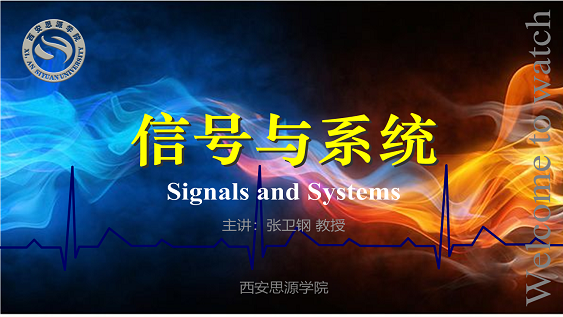
当前课程知识点:Structural Geology > The 7th Chapter Geotectonics > 7.3 Sedimentary basins under plate tectonic theory > 7.3 Sedimentary basins under plate tectonic theory
返回《Structural Geology》慕课在线视频课程列表
返回《Structural Geology》慕课在线视频列表
同学们
Hello everyone!
今天这堂课我们学习的是
In today's class, we are going to learn
板块构造理论下的沉积盆地
sedimentary basins from the perspective of plate tectonic theory.
盆地是指那些四周较高
Basins are those basin-shaped sedimentary areas that are relatively high in the four aspects
中间低的盆形沉积地区
and low in the center,
或是持续接受沉积的地区
or the areas that continue to receive deposits.
而沉积盆地是沉积岩或沉积物分布的地区
Sedimentary basins are areas where sedimentary rocks or sediments are distributed.
其中含油气盆地
Among them, petroliferous basins
是指已经发现有工业油气流的盆地
refer to the basins where industrial oil and gas flow has been found
或者有油气形成过程的盆地
or basins seeing formation of oil and gas.
开展盆地研究首先就面临着分类的问题
First of all, the problem of classification is faced when carrying out basin research.
历史上也有许多经典分类方案
There are also many classical classification schemes in history.
其中Dickinson
Dickinson
根据盆地形成的地球动力学背景
according to the geodynamic background of basin formation,
将盆地分为裂谷型盆地和造山型盆地
divide basins into rift and orogenic types.
两者可各进一步划分为8小类
The two types can be further divided into 8 sub-categories.
首先是裂谷形盆地
Rift basins can be further divided into the follows.
基底克拉通盆地
Cratonic basins
位于大陆内部的裂谷盆地
locate within rift basins in continents
盆地基底已变薄
with thinned basin basement.
边缘坳拉谷
Marginal aulacogen
位于大陆边缘凹入部分
locate in failed rifts extending inside continents
向大陆内部延伸的夭折裂谷
from the margin of continents.
原始大洋裂谷
Proto-oceanic basins
在两个大陆地块之间
locate between continental margins,
开始出现狭长的洋壳
and are formed by narrow oceanic crust.
但沉积作用仍受两侧大陆的影响
However, sedimentation is still influenced by continents on the two sides.
这三种是陆块未完全裂开的情况下
These three kinds of basins are formed
形成的盆地
when land masses are not completely rifted.
冒地斜沉积棱柱体
Miogeoclinal basins
位于大陆和大洋过渡带的陆阶
locate in the continent terrace in the transitional zone between continents and oceans.
陆坡和陆隆上的沉积复合体
They have deposits from continental slopes and rises
并将张裂的大陆边缘埋盖起来
and cover rifted continental margins.
陆堤
Continental embankments
位于张裂大陆边缘的外沿
are progradation of sedimentary wedges
形成逐渐向海洋方向推进的沉积物
at edge of rifted continental margins.
新生大洋盆地
Nascent oceanic basins
在大洋中脊与大陆地块之间
between mid-ocean ridges and continental margins
由于新岩石圈增长和下沉而形成的盆地
are formed by the growth and subsidence of new lithosphere.
这三种是陆块完全裂开的情况下
These three types of basins are formed
形成的盆地
when land masses are completely rifted.
扭张性盆地
Transtensional basins
沿着转换断层系
are pull-apart basins or wedge-shaped faulted basins
发生的拉开盆地或楔状断陷盆地
along transform fault systems.
弧间盆地
Inter-arc basins
由于岩浆弧裂开
are small ocean basins formed as magma arcs crack
弧后扩张所形成的小洋盆
and back-arc expands.
这两种是与转换断层有关的
These two types are mixed rift basins
混合型裂谷盆地
related to transform faults.
造山型盆地
Orogenic basins are divided into the follows.
海沟
Trenches
由于板块俯冲所形成的深海槽
are deep-sea troughs formed by subduction of plates.
斜坡盆地
Trench-slope basins
发育在海沟与斜坡转折点之间的构造
are structures that develop between trenches and trench slope break.
弧前盆地
Forearc basins
形成在岛弧与海沟间隙内
form in the gaps between island arcs and trenches.
这三种是沿岛弧造山带
These three types are along island arc orogenic belts.
海沟一侧与消减杂岩体发育相关的盆地
distribute on the side of trenches related to the development of subduction complexes.
周缘前陆盆地
Peripheral foreland basins
与碰撞造山带相邻
adjacent to collisional orogenic belts
发生在克拉通周缘的盆地
locate in the basins around the craton.
弧后前陆盆地
Retroarc foreland basins,
与岛弧造山带相邻
adjacent to arc orogenic belts,
发育在大陆边缘岩浆弧的后面
develop behind magmatic arcs on continental margins.
破裂前陆盆地
Broken forelands
位于造山带的前陆盆地
locate in foreland basins of orogenic belts,
由于基底变形和块断所引起的构造凹地
are formed by deformation and fracture of basement.
这三种是与造山带变形翼部毗连的
These three types are formed in forelands of craton margins
克拉通边缘前陆环境中形成的盆地
adjacent to the deformed limbs of orogenic belts.
扭压性盆地
Transpressional basins
沿着转换断层系
locate along transform fault systems
可以出现扭动褶皱和向下坳曲的盆地
They can show folds and bends downwards.
残余大洋盆地
Remnant ocean basins
沿着岛弧-海沟系的边界
along the boundary of island arc-trench system,
由于老岩石圈的消减而产生的收缩盆地
are shrinking basins formed by subduction of old lithosphere.
这两种是在岛弧造山带和碰撞造山带以外
These two types are basins formed by contraction
由压缩而形成的盆地
outside island arc orogenic belts and collisional orogenic belts.
在板块构造理论框架下
Under the framework of plate tectonics theory,
盆地的分类
basins
按照其所处的板块构造背景进行划分
can be classified according to the plate tectonic background in which they are located,
即离散背景
i.e. divergent,
聚敛背景和转换背景
convergent, and transform background.
相应的盆地类型划分方案为
The corresponding basin type division scheme is as follows.
伸展型
Extensional basins include
大洋盆地 被动大陆边缘盆地
ocean basins, passive continental margin basins,
裂谷盆地 克拉通盆地
rift basins, and craton basins.
汇聚型
Convergent basins include
海沟 弧前盆地 弧间盆地
trenches, for-arc basins, inter-arc basins,
弧后盆地 前陆盆地
backarc basins, foreland basins,
周缘前陆盆地 弧后前陆盆地 再生前陆盆地
peripheral foreland basins, back-arc foreland basins, and rejuvenated foreland basins.
走滑型
The strike-slip type is
走滑盆地
strike-slip basins.
伸展型盆地主要构造特征
Main structural characteristics of extensional basins are as follows.
是由岩石圈受拉张而伸展
They are rift or rift-depression basins formed due to the elongation of the lithosphere under tension
减薄形成的裂陷或裂陷—坳陷盆地
and thinning.
其基底构造样式主要由
The structural style of its basement is mainly composed of
基底拆离断层和伸展断块组成
basement decollement faults and extensional fault blocks.
盖层伸展构造变形主要由伸展正断层
The extensional structural deformation of caprock is mainly caused by fault blocks of extensional normal faults and
断块和相应背斜组成
corresponding anticlines.
汇聚型盆地主要构造特征
Main structural characteristics of convergent basins are as follows.
由挤压作用形成的盆地
They are basins formed by compression
或者受逆冲断层控制的盆地
or controlled by thrust faults.
常与板块俯冲和碰撞作用有关
They are often related to plate subduction and collision,
表现为地壳或岩石圈的缩短变形
represented by shortening of crust or lithosphere.
其基底构造样式主要是大型基底逆冲断裂
The basement structural style is mainly large-scale basement thrust faults,
发育在弧前盆地的靠陆一侧
developed on the continental side of fore-arc basins.
以及前陆盆地的靠造山带一侧
and the orogenic belt side of foreland basins.
盖层冲断层系主要构造类型
Major structural types of caprock thrust fault system
为叠瓦式冲断层 双重冲断层
are imbricate, duplex,
反向冲断层等
reverse thrust faults, etc..
走滑型盆地是指沿着大型走滑构造带分布
Strike-slip basins are distributed along large strike-slip structural zones.
由走滑作用形成的盆地
Basin formed by strike-slip action
或者是受走滑断层控制的盆地
or controlled by strike-slip faults
其规模可从小到几百平方米的小凹陷
can range from small depressions of several hundred square meters
大到几十平方公里的断陷盆地
to faulted basins as large as tens of square kilometers.
形态一般为菱形或长条形
They are generally rhombus or strip-shaped,
长轴方向与走滑构造带方向一致
and their long axis direction is consistent with the orientation of strike-slip structural belts.
走滑断层的活动
Strike-slip faulting
可形成于张扭和压扭两种环境
can be formed in two environments of transtension and transpression
分别发育张扭盆地和压扭盆地
developing transtensional and transpressional basins, respectively.
前者称走滑拉分盆地
The former is called strike-slip pull-apart basins,
后者称走滑挤压盆地
and the latter is called strike-slip compressional basins.
-Geological mysteries hidden in structural geology
--Geological mysteries hidden in structural geology
-Discussion: What phenomena in our daily life are related to Structural Geology?
-1.1 Distinguish the top and bottom of bedding by recognizing the primary structure of sedimentary s
--1.1 Distinguish the top and bottom of bedding by recognizing the primary structure of sedimentary
-1.2 Characteristics of horizontal strata
--1.2 Characteristics of horizontal strata
-1.3 Attitude and its expression for planar and linear structures
--1.3 Attitude and its expression for planar and linear structures
-1.4 Patterns and thickness of outcrop of rock beddings
--1.4 Patterns and thickness of outcrop of rock beddings
-Discussion: How to apply the V rule in structural analysis
-Discussion: When observing geological phenomena in the field, how to distinguish whether the rock se
-Quiz 1
-Assignment
-2.1 Parallel unconformity and its characteristics
--2.1 Parallel unconformity and its characteristics
-2.2 Angular unconformity and its characteristics
--2.2 Angular unconformity and its characteristics
-2.3 Research on unconformity
--2.3 Research on unconformity
-Discussion: What kind of tectonic backgrounds do parallel unconformity and angular unconformity repr
-Quiz 2
-assignment 2
-3.1 Concepts of force and stress
--3.1 Concepts of force and stress
-3.2 Deformation and strain
-3.3 deformation stages of rocks
--3.3 deformation stages of rocks
-3.4 Factors affecting deformation
--3.4 Factors affecting deformation
-Discussion: There is an old saying "constant dropping wears away a stone", which deformation factor
-Quiz 3
-Assignment 3
-4.1 Geometrical elements of folds
--4.1 Geometrical elements of folds
-4.2 Morphological description of folds-part I
--4.2 Morphological description of folds-part I
-4.3 Morphological description of folds-part II
--4.3 Morphological description of folds-part II
-4.4 Special fold types
-4.5 Fold combination types
-4.6 Single-layer buckling folding
--4.6 Single-layer buckling folding
-4.7 Multi-layer buckling folding
--4.7 Multi-layer buckling folding
-4.8 Other folding
-4.9 Study on folds
-Discussion: Are folds commonly accompanied by faults? Why?
-Discussion: Which signs can be used to identify folds in the field?
-Quiz 4
-Assignment 4
-5.1 Classification of joints by geometric features
--5.1 Classification of joints by geometric features
-5.2 Characteristics of tension joints and shear joints
--5.2 Characteristics of tension joints and shear joints
-5.3 Characteristics of structural joints and non-structural joints
--5.3 Characteristics of structural joints and non-structural joints
-5.4 Staging and matching of joints
--5.4 Staging and matching of joints
-5.5 Preparation and analysis of rose diagrams of joints
--5.5 Preparation and analysis of rose diagrams of joints
-Discussion: Which kind of rock may joints prevail in?
-Discussion: What is the relationship between joints and oil and gas exploration
-Quiz 5
-Assignment 5
-6.1 Fault geometrical elements
--6.1 Fault geometrical elements
-6.2 Classification of faults
--6.2 Classification of faults
-6.3 Normal fault and normal fault system
--6.3 Normal fault and normal fault system
-6.4 Reverse fault and reverse fault system-part I
--6.4 Reverse fault and reverse fault system-part I
-6.5 Reverse fault and reverse fault system-part II
--6.5 Reverse fault and reverse fault system-part II
-6.6 Strike-slip fault and strike-slip fault system
--6.6 Strike-slip fault and strike-slip fault system
-6.7 Anderson theory of faulting
--6.7 Anderson theory of faulting
-6.8 Identification signs of faults
--6.8 Identification signs of faults
-Discussion: In recent years, earthquakes occurred frequently. According to your knowledge and unders
-Quiz 6
-Assignment 6
-7.1 The concept and development history of tectonics
--7.1 The concept and development history of tectonics
-7.2 Plate tectonic theory
-7.3 Sedimentary basins under plate tectonic theory

